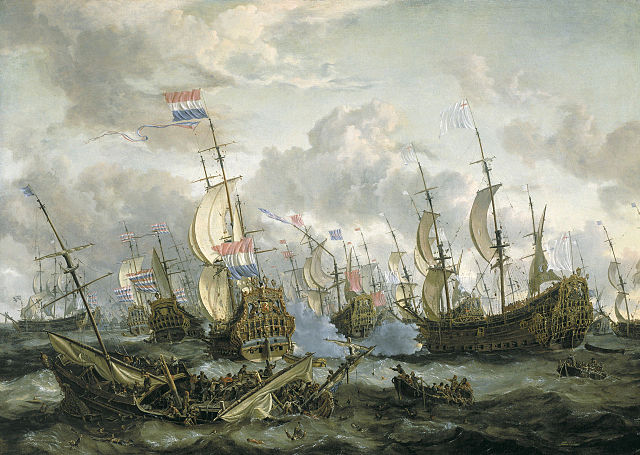The Second Anglo-Dutch War, or Second Dutch War, began on 4 March 1665, and concluded with the signing of the Treaty of Breda on 31 July 1667. One in a series of naval conflicts between England and the Dutch Republic, its causes were a combination of political differences and commercial disputes.
The Four Days' Battle, 1–4 June 1666, by Abraham Storck
Ships in Amsterdam harbour, c. 1690; in the second half of the 17th century, Dutch merchants dominated European trade
HMS Sovereign of the Seas, with its architect Peter Pett; built in 1634, it carried over 100 guns, while the largest Dutch ships had a complement of 60 to 70
The Four Days' Battle as depicted by Abraham Storck
The Peace of Breda, or Treaty of Breda was signed in the Dutch city of Breda, on 31 July 1667. It consisted of three separate treaties between England and each of its opponents in the Second Anglo-Dutch War: the Dutch Republic, France, and Denmark–Norway. It also included a separate Anglo-Dutch commercial agreement.
Contemporary engraving of the signing of the peace at Breda Castle
The Dutch suffered a serious defeat at Lowestoft, in June 1665 but the English were unable to take advantage
The June Raid on the Medway brought a quick end to negotiations but Charles never forgot the humiliation
War of Devolution; French forces besiege Kortrijk in the Spanish Netherlands







